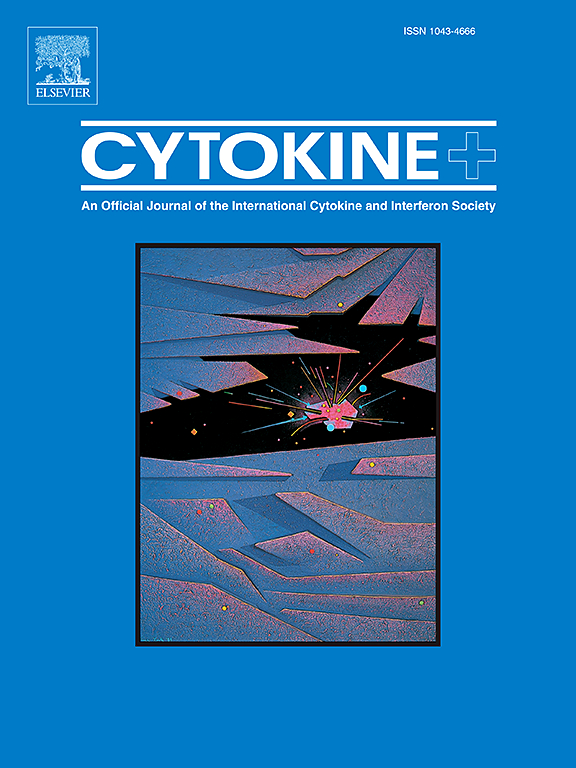Longitudinal inflammatory biomarker profiling in intrauterine growth restricted preterm infants
IF 3.7
3区 医学
Q2 BIOCHEMISTRY & MOLECULAR BIOLOGY
引用次数: 0
Abstract
Objectives
Intrauterine growth restriction (IUGR) places premature infants at an increased risk of multiple neonatal morbidities. Previous studies have found increased concentrations of pro-inflammatory biomarkers in IUGR infants at the time of birth and through the first postnatal month. This study aims to assess the longitudinal inflammatory profile of IUGR infants from birth to discharge from the neonatal intensive care unit.
Materials and Methods
A case-control study was performed with 24 IUGR infants and 24 appropriate for gestational age (AGA) infants born prematurely at or before 32 6/7 weeks' gestational age included. Residual clinical serum samples were collected and serum concentrations of IL-1β, sIL2Rα, IL-6, IL-8, IL-10, IP-10, MCP-1, MIP-1α, and TNF-α were measured by multi-plex protein assay. Residual clinical whole blood samples were collected, peripheral mononuclear blood cells were isolated, and flow cytometry was performed to assess differences in populations of peripheral immune cells.
Results
There were significant differences in the birth weight and birth weight percentile between the IUGR and AGA groups, but no further demographic differences. The was significant elevation of IL-8, IL-10, and MCP-1 in the IUGR population at various timepoints during admission. There were no differences in overall cell populations between the two groups, however there were significantly increased activated classical monocytes and cytotoxic T cells in the IUGR group one month post-delivery.
Conclusion
Intrauterine growth restriction contributes to a fetal and continued neonatal pro-inflammatory state, as evidenced by elevation in IL-8 and MCP-1. Though there are increased populations of activated classical monocytes and cytotoxic T cells in these infants, this pro-inflammatory state may also contribute to tissue-specific inflammation which contributes to worsened neonatal outcomes for premature IUGR infants.

求助全文
约1分钟内获得全文
求助全文
来源期刊

Cytokine
医学-免疫学
CiteScore
7.60
自引率
2.60%
发文量
262
审稿时长
48 days
期刊介绍:
The journal Cytokine has an open access mirror journal Cytokine: X, sharing the same aims and scope, editorial team, submission system and rigorous peer review.
* Devoted exclusively to the study of the molecular biology, genetics, biochemistry, immunology, genome-wide association studies, pathobiology, diagnostic and clinical applications of all known interleukins, hematopoietic factors, growth factors, cytotoxins, interferons, new cytokines, and chemokines, Cytokine provides comprehensive coverage of cytokines and their mechanisms of actions, 12 times a year by publishing original high quality refereed scientific papers from prominent investigators in both the academic and industrial sectors.
We will publish 3 major types of manuscripts:
1) Original manuscripts describing research results.
2) Basic and clinical reviews describing cytokine actions and regulation.
3) Short commentaries/perspectives on recently published aspects of cytokines, pathogenesis and clinical results.
 求助内容:
求助内容: 应助结果提醒方式:
应助结果提醒方式:


